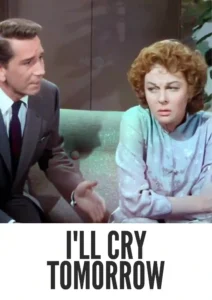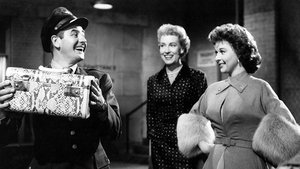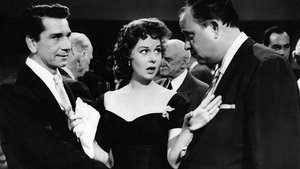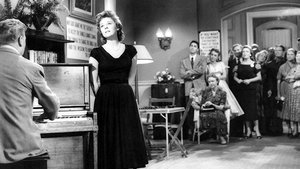Video Sources 0 Views
- Watch trailer
- I'll Cry Tomorrow 1955 Colorized


Download I’ll Cry Tomorrow (1955) Colorized HD | Susan Hayward | Emotional Drama | Award-Winning
Synopsis
Table of Contents
Toggle
Step into the turbulent world of Lillian Roth, a Broadway sensation whose dazzling career masked a harrowing personal battle, in I’ll Cry Tomorrow. This powerful 1955 biographical drama, now vividly colorized, showcases Susan Hayward’s tour-de-force performance as Roth, offering an emotionally resonant experience unlike any other. Perfect for fans of classic Hollywood and compelling human stories, this HD download brings Roth’s inspiring journey of resilience to life with stunning clarity.
I’ll Cry Tomorrow chronicles the life of Lillian Roth, a talented singer and actress who rises to fame in the world of vaudeville and Broadway. From a young age, Lillian is pushed relentlessly by her ambitious stage mother, Katie, setting the stage for a life of immense pressure and public scrutiny. As Lillian’s career skyrockets, so does her dependence on alcohol as a means of coping with the stress and emotional wounds that haunt her.
The film portrays Roth’s heart-wrenching descent into alcoholism, marked by failed relationships, professional setbacks, and devastating personal losses. Richard Conte plays Burt McGuire, Roth’s supportive but ultimately helpless first husband. Eddie Albert portrays Burt’s friend, Wallie, who is also in love with Lillian and later becomes her second husband. Jo Van Fleet plays Katie Roth, Lillian’s well-meaning but overbearing mother. Through these relationships, Lillian continues to spiral out of control as she grapples with addiction, facing the harsh realities of her self-destructive behavior. Ultimately, I’ll Cry Tomorrow is a story of hope, tracing Lillian’s courageous journey towards sobriety and self-acceptance with the help of Alcoholics Anonymous.
The film boasts an outstanding cast, each delivering memorable performances:
-
Susan Hayward as Lillian Roth
-
Richard Conte as Burt McGuire
-
Eddie Albert as Wallie
-
Jo Van Fleet as Katie Roth
-
Ray Danton as David Tredman
I’ll Cry Tomorrow firmly resides in the genre of emotional drama, with elements of biography and musical performance interwoven throughout. Its unflinching portrayal of addiction and recovery elevates it beyond a typical biopic, making it a deeply moving and unforgettable cinematic experience.
Released in 1955, I’ll Cry Tomorrow reflects the growing willingness of Hollywood to tackle complex social issues such as alcoholism and mental health. The film’s success marked a significant moment in cinematic history, demonstrating the power of storytelling to destigmatize addiction and promote understanding. Susan Hayward’s performance was critically acclaimed, earning her an Academy Award nomination and solidifying her reputation as one of the leading actresses of her time.
This colorized version of I’ll Cry Tomorrow has been meticulously restored using state-of-the-art digital technology, enhancing the visual impact while preserving the film’s emotional depth. The colorization process involved a meticulous analysis of the original black and white footage, ensuring historically accurate and aesthetically pleasing color palettes. Advanced algorithms were used to enhance image clarity and reduce artifacts, resulting in a viewing experience that honors the film’s legacy while making it accessible to modern audiences. By bringing color to this timeless classic, the colorization process allows viewers to connect with the characters and their struggles on a deeper level, creating a more immersive and impactful experience.
I’ll Cry Tomorrow is based on the autobiographical book of the same name by Lillian Roth.
-
: Daniel Mann
-
: Helen Deutsch, Jay Richard Kennedy
-
: I’ll Cry Tomorrow by Lillian Roth
-
: Arthur E. Arling
-
: Harold F. Kress
-
: Metro-Goldwyn-Mayer
-
: Metro-Goldwyn-Mayer
-
: 119 minutes
-
: MP4
-
: HD (1080p)
-
: Compatible with most devices, including smartphones, tablets, computers, and smart TVs.
I’ll Cry Tomorrow (1955) received widespread acclaim for its powerful storytelling and exceptional performances, particularly that of Susan Hayward. The film was praised for its unflinching portrayal of addiction and its message of hope and redemption.
-
: What is I’ll Cry Tomorrow about?
-
A: I’ll Cry Tomorrow is a biographical drama about Lillian Roth, a singer and actress who struggles with alcoholism.
-
-
: Is I’ll Cry Tomorrow (1955) a critically acclaimed film?
-
A: Yes, I’ll Cry Tomorrow is highly regarded for its performances and its unflinching portrayal of addiction.
-
-
: Is this version of I’ll Cry Tomorrow colorized?
-
A: Yes, this version has been professionally colorized to enhance the viewing experience.
-
-
: What makes I’ll Cry Tomorrow a significant film?
-
A: I’ll Cry Tomorrow was groundbreaking for its time, tackling the sensitive subject of addiction and offering a message of hope.
-
-
: What is the download format?
-
A: The download format is MP4, which is compatible with most devices.
-
-
: What resolution is the download?
-
A: The resolution is HD (1080p), providing a high-quality viewing experience.
-
Experience Susan Hayward’s unforgettable performance in I’ll Cry Tomorrow today!













